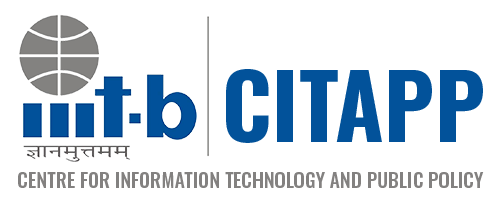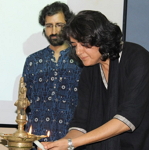Date: 26-08-2015
Description: The Kabir Project Live – a concert by Shabnam Virmani and Vipul Rikhi – was organized by the Information Society Student club (ISoC) on 26 August 2015. Details of the programme are as follows:
Shabnam Virmani is a filmmaker and artist in residence at the Srishti School of Art, Design and Technology in Bangalore, India. In 2003 she started travelling with folk singers in Malwa, Rajasthan and also Pakistan in a quest for the spiritual and socio-political resonances of the 15th century mystic poet Kabir in our contemporary worlds. Inspired by the inclusive spirit of folk music, Shabnam took up playing the 5-stringed tambura herself and now sings a wide repertoire of folk songs of Kabir and other mystic poets.
Vipul Rikhi is a poet, writer, translator and singer. His work with Kabir Project includes extensive writings on and translations of a wide range of mystic poetry. He loves to play the tambura and manjiras, and to sing mystic poetry in the folk tradition. He is also the author of a novel and collections of poetry and short stories.
The Kabir Project consists of many ongoing journeys exploring contemporary resonances of bhakti, sufi and baul poetry through songs, images and conversations. Started in 2003, these journeys inquire into the spiritual and socio-political resonances of mystic poetry in our contemporary worlds. Currently work is underway on Ajab Shahar, a vast online bi-lingual (English and Hindi) repository of songs, poetry and ideas of Kabir and other mystic poets. The archive will offer a curated collection of over 500 songs, reflections and stories all carefully researched, translated and annotated.
About ISoC – The aim of the Information Society Student club (ISoC) at IIIT-B is to provide the students a forum for developing a better appreciation of social realities using multiple perspectives and methodologies. The premise is that a better understanding of social contexts will make the future IT professionals more sensitive to the needs and capacities of their fellow human beings and this can lead to design of more relevant and useful IT products and services.

